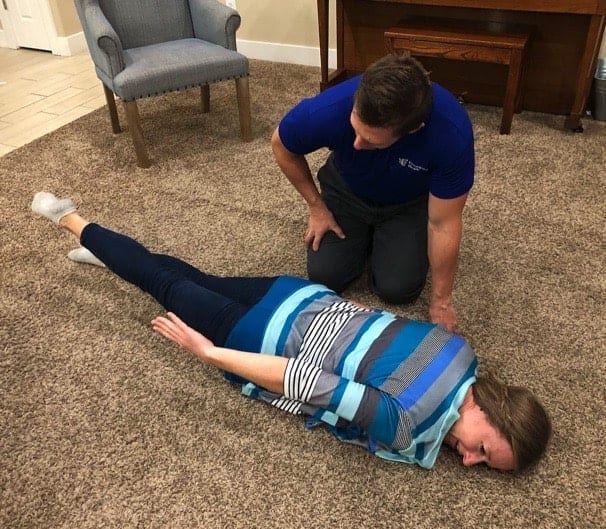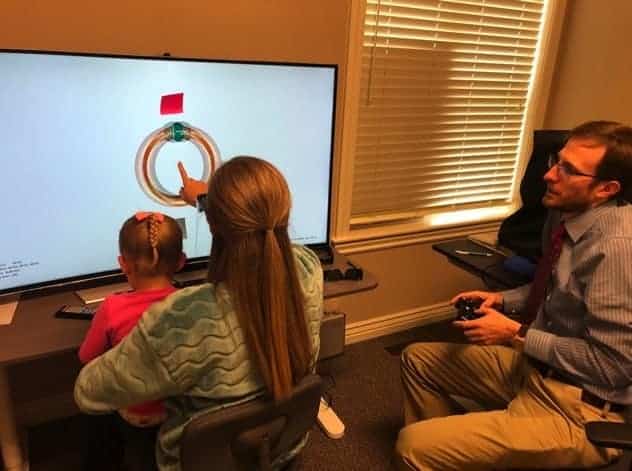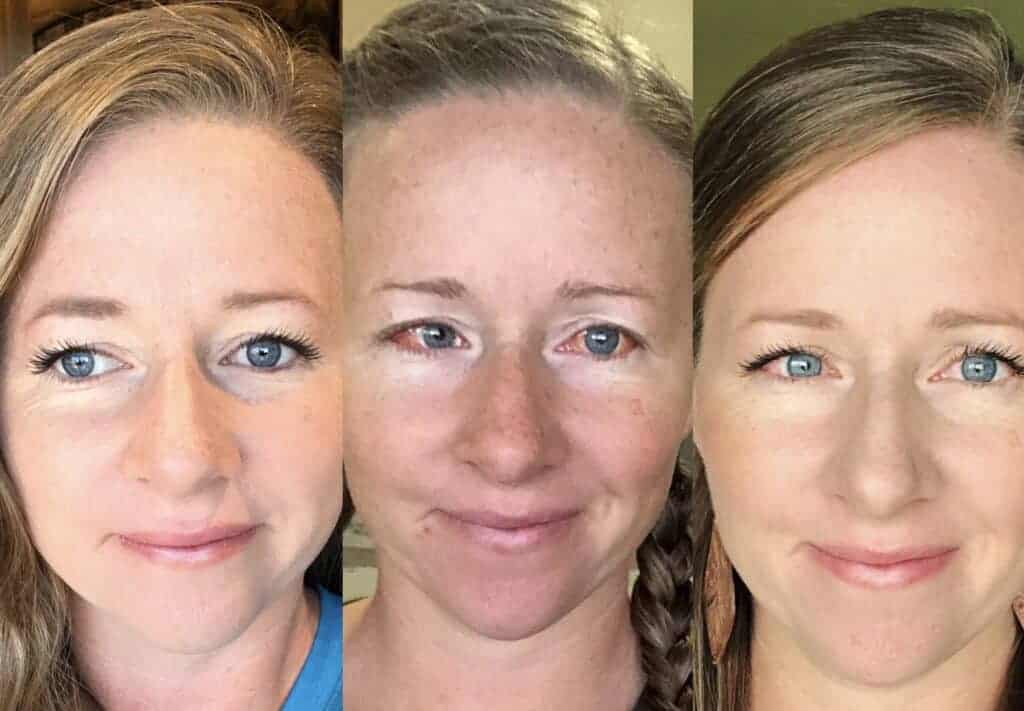You’re trying to make the agonizing decision of whether or not strabismus surgery is going to be worth the investment and you’re plagued with so many stories of the surgery not “sticking.” It feels like a game of roulette and you just are hoping you will be one of the lucky ones. As someone who has had 4 surgeries and ended up with straight eyes, 4 years later, I’ve discovered why some surgeries “work” while others don’t seem to make a difference.
So why don’t the results from strabismus surgery work long-term? Strabismus is a very complex diagnosis that can involve a variety of muscle, nerve, and neurological issues. Surgery only addresses the muscles, not the underlying cause of the eye turn. Because the underlying issues remain, the eyes often return to their original position eventually unless the neurological issues are also addressed. If stereo vision can be achieved, the brain will want to keep the eyes straight.
While we can’t predict exactly how the brain will respond to surgery, we can make some educated guesses based on how you are using your visual system now and research on strabismus. Let’s dive into why exactly strabismus surgery doesn’t always work and how to ensure that you get the result of straight eyes!
How do “Normal” Eyes Stay Straight? What Are Strabismics Missing?
Did you know that 97% of the population has straight eyes and they don’t even have to think about it, it is automatic. How is it so easy for them?
For most people, the brain develops stereopsis (two-eyed seeing) within the first 1-2 years of life. As the baby develops vision, their brain learns to take the information from each eye, combine it and use that information to determine where objects are in space. They look at an object, bring it to their mouth to learn more about it, play with their feet and all of this teaches their brain how to locate objects in space.

Once the stereopsis is learned, the brain recognizes it as the most efficient way to see and keeps the eyes straight to maintain the best vision possible. The brain is all about efficiency and straight eyes and stereopsis are very efficient for moving through the world. In the first year of life, even an infant without strabismus will appear to have wandering eyes from time to time as the brain sorts out how to use the eyes together.
As “normal” eyes look near, they coordinate and move in or converge on the object. As they look in the distance, they diverge or move slightly further apart. This is all carefully coordinated by the brain, but is fully automatic.
Stereopsis at all distances keeps the eyes working together. Without stereopsis, the brain isn’t benefiting from straight eyes, in fact, straight eyes actually can present the trouble of double vision and discourage the brain from keeping the eyes straight at all.
This leads us directly into the issues of strabismus which is when the eyes are not pointing in the same direction.
Underlying Issues With Strabismus
This chart can help distinguish between several different reasons a person may develop an eye turn or misalignment. This is not an all-inclusive list, by any means, but covers the majority of cases.
| Issue | What | How it Impacts Alignment |
| Amblyopia “lazy eye” | Even with glasses, one or both eyes cannot see clearly. The brain usually chooses to use only one eye, leaving the other with less stimulation so that it cannot develop properly. | If the brain ignores one eye, it often will wander and become misaligned. |
| Lack of Stereopsis | If the brain is unable to develop stereopsis early in life or has difficulty getting fusion between images, double vision occurs. This creates an environment where the brain does not want straight eyes. | To avoid double vision, the brain moves the eye in or out to make it easier to ignore. |
| Nerve Palsy | For the eye muscles to work properly, the nerves connecting them to the brain must be fully functioning. There are a variety of nerve palsy’s that prevent specific eye muscles from doing their jobs. | Usually, this creates an eye turn in specific gazes such as looking up and to the left or right. |
| Muscle Imbalance | While the muscles may have started all equally yoked, over time the muscles can be weakened, tighten or improperly coordinated because they aren’t being used. | This creates a difficulty in straightening the eyes, even with eye exercises. |
| Refractive Error | If the eyes have significantly different acuity or just severe refractive error, the brain response can be similar to amblyopia where the brain starts to ignore one eye. The brain can’t combine the images from each eye because they are so different. | If the brain chooses one eye, the other may be left to wander, but this is usually remedied with the correct glasses prescription. |
| Decompensated Phoria | There may have been a binocular vision problem where the eyes couldn’t coordinate very well early on in life like convergence insufficiency or convergence excess, but the eyes stayed straight and there was just added strain. Sometimes, later in life, with the natural aging process, a head injury, or other eye surgery this can turn to a strabismus | The brain can no longer fuse and gives up on the strain and just lets the weaker eye drift. This usually is paired with double vision. |
With most of these cases of strabismus, the underlying issues involve the connection to the brain and the ability to fuse images together, not the actual structure of the muscles and eye.
Surgery addresses the physical position of the eye muscles, which can make a huge difference if the problem is a muscle problem.
Unfortunately, there is usually a deeper, binocular vision problem that needs to be addressed in order for a new muscle position to make a difference in long-term eye alignment.
Short-Term vs Long-Term Success with Strabismus Surgery
In strabismus surgery, the surgeon adjusts the eye muscles to create a straight eye position. A “success” is counted as getting the eye to within 10-15 diopters of straight. At this point, the eye turn is not really visible to the general public and will generate far less head turns and questions.

Short-Term – First 6-12 months after surgery
The first few weeks after surgery, the eyes adjust as the brain responds to the new position. After about 3-4 weeks they reach the basic place they are going to stay for the next 6-12 months.
This is the chance for the brain to use the eyes together in a straight position. If the brain can start using the eyes together, it is much more likely to keep the eyes straight. The improved vision is an incentive for the eyes to stay in the same position. Even if there is no central fusion, good peripheral stereo can make a difference in maintaining alignment.
My Mastering Peripheral course is a great resources for learning to use both eyes peripherally!
Long-Term – 1-100 years after surgery
Surgery success rates in most clinical studies do not follow patients past the one year mark (there are a few exceptions). They are usually measuring at the 6 week, 6 month, or 1 year post-op and the success rates vary from about 50-75%.
At this point, if the brain is using the eyes together, even partially, the eyes will stay straight much longer because the brain is seeing a benefit to that position. In contrast, if a patient is completely blind in one eye, the eye turn may come back more quickly because there is no reason for the brain to keep the eyes straight.
Many times, the eye position will slowly change or decompensated over a 5-10 year period after which another surgery is needed.
One exception is Susan Barry, author of “Fixing My Gaze.” After 3 childhood surgeries, she maintained an angle of about 15 diopters of esotropia for about 40 years. This angle correlates with the blindspot of the retina and her brain may have chosen that position to keep the double vision at bay.
Each strabismic brain handles post-surgery strabismus slightly differently, but the common theme is that it avoids double vision at all costs and doesn’t seem concerned with a straight position if both eyes aren’t being used.
Addressing the Underlying Issues of Strabismus or Lazy Eye
I think I’ve made it clear at this point that the underlying issues of strabismus and/or lazy eye must be addressed before surgery to ensure that the eyes actually stay straight.
The question is how is this done?
The diagnosis and history will determine this, you can take this free quiz to get a better idea of what may be needed for your case. But I will also share with you the general approach.
In general, most people with any form of strabismus share one thing in common. The brain isn’t using the eyes together efficiently, or at all. There is some sort of disruption in binocular vision and the result is an eye turn.
So to fix this underlying problem, the brain needs to learn to use both eyes together. To fuse the images coming in through each eye. To coordinate that information and relay to the body how to respond to that visual input. To integrate two-eyed seeing with the rest of the body.
This is best done through in-office vision therapy with a specialized developmental optometrist.



Many people try to do this therapy on their own, but it is more complex than it seems. It is much more comparable to stroke rehab or learning to walk after a spinal cord injury than to training for a race and exercising muscles to build strength.
The problem isn’t that the muscles are so weak that they can’t stay straight and need to be strengthened. It’s that the brain doesn’t know what to do with them. In most cases, the muscles are plenty strong, they just aren’t being used correctly.
I am happy to help you find a vision therapy office that you can work with. Fill out the form below and I will email you options close to your location.
How I Combined Vision Therapy and Strabismus Surgery to Get a Lasting Result
In 2018, I started having functional problems with my vision, and let’s be honest, I really didn’t enjoy having a severe eye turn. I didn’t like rude comments or stares. This started a journey to fixing my vision.

Initially, I hoped to be able to completely fix my vision with vision therapy. It made sense that my brain needed to know how to use both eyes together in order for them to stay straight and surgery felt like a bandaid solution rather than a long-term one.
I was able to learn to straighten my eyes and gained some stereo (mostly peripheral, not super central), but I couldn’t keep my eyes straight all the time without strain.
At this point I decided to undergo surgery. The results were not perfect. Now instead of a large outward eye turn (exotropia), I had a small inward eyeturn (esotropia).

BUT because of the work of vision therapy before surgery, and continued therapy after surgery, my eye position continued to improve. The more I learned to use my eyes together, the straighter they became. My brain has finally learned that two eyes are better than one. Now, my eyes are straight (ortho) at near and have a small angle of esotropia (6-8) in the distance. My depth perception is drastically improved and I am confident that the eye position will stay straight throughout time because my brain is using both eyes.

Surgery alone rarely gives a lasting result, but when the underlying issues are addressed, lasting results are possible! It has now been 4 years and my vision just keeps getting better, along with the alignment of my eyes.
For some, strabismus surgery is the perfect option and can yield lasting results. Unfortunately, for most of us with strabismus, we are going to need a combination of eye exercises and surgery to get the brain to accept and keep the eyes in a straight position. It is possible, but it takes work. Let me help you on your way!
